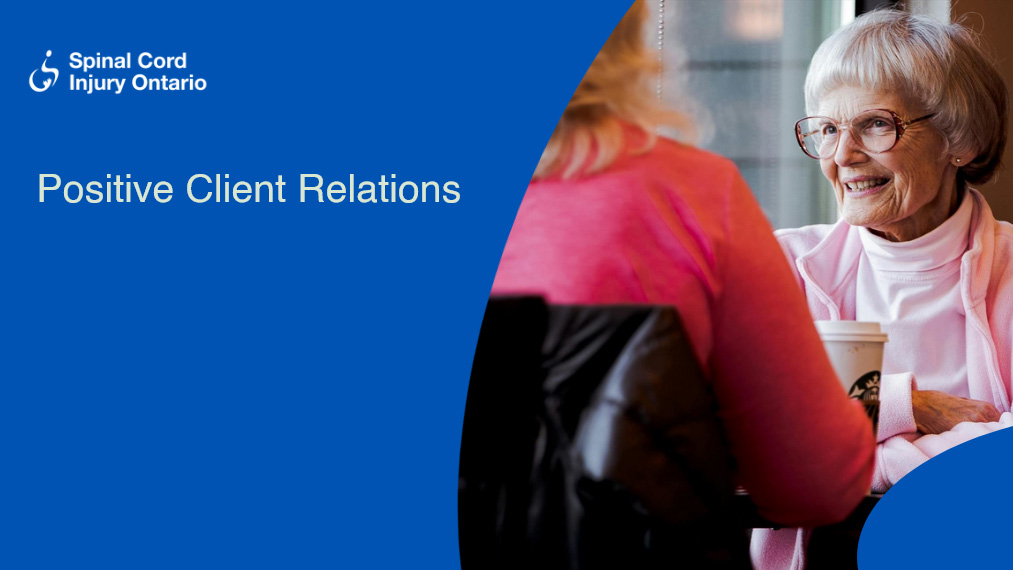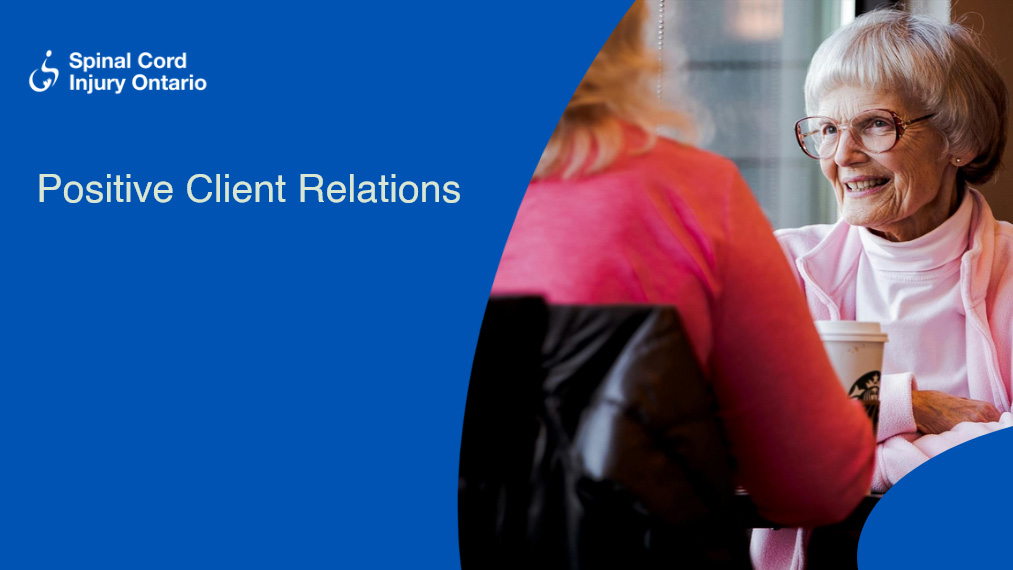Before we dive in, let me be clear. I’m not some fancy business guru or a smooth talker by nature. I’m just a regular person who used to dread certain phone calls and struggled with those "difficult" clients. If that sounds like you, or if you’re just starting out in your career and want to get a head start, then pull up a chair. This might just be for you.
My "Aha!" Moment: Why I Needed a Client Relations Course
You know that feeling when you’re talking to a client, and you just know something isn’t quite right? Maybe their tone is a little off, or they keep asking the same question in different ways, and you’re just not connecting? Yeah, I lived in that space for a while.
I used to think that "client relations" was just about being polite and delivering what you promised. Simple, right? Turns out, it’s a whole lot more. My days often involved a mix of triumphs and face-palms. I’d nail a project, but then a client would feel unheard. I’d deliver on time, but then they’d have unexpected concerns. I was doing the work, but the relationship often felt like a shaky bridge.
One particularly tough week, after a project almost went sideways due to what felt like a huge misunderstanding, I sat there, frustrated. "There has to be a better way," I mumbled to myself. It wasn’t just about getting the job done; it was about making people feel good about how it got done. It was about trust, clarity, and that intangible feeling of being truly taken care of. That’s when I started looking for help, and that’s when the idea of a Client Relations Course popped onto my radar.
Stepping into the Classroom: My First Impressions
Signing up for the course felt a bit like admitting defeat, to be honest. Like, "Oh, I need help talking to people." But it quickly turned into one of the best decisions I’ve ever made.
I remember walking into the first session. I was a bit nervous, scanning the room. There were people from all sorts of backgrounds – a small business owner, a young sales rep, even someone from a non-profit. It quickly hit me: this isn’t just for one type of job; it’s for anyone who deals with other humans professionally.
Our instructor, a warm and insightful woman named Sarah, started not with theories, but with stories. Her own stories of successes and blunders. Right away, I felt at ease. This wasn’t going to be some dry, academic lecture. This was going to be about real-life situations, real people, and real solutions. It was less about memorizing rules and more about understanding human nature.
Unpacking the Essentials: What I Actually Learned (and Loved!)
The course was like opening a toolbox I never knew existed. Each session gave me a new tool, a new perspective. Here are some of the game-changers:
More Than Just Talking: The Power of Listening
This was probably the biggest eye-opener. I thought I was a good listener. I’d nod, make eye contact, and wait for my turn to speak. But Sarah introduced me to "active listening." It’s not just about hearing words; it’s about understanding the feeling behind them, asking clarifying questions, and reflecting back what you think you heard.
I remember one exercise where we had to listen to someone describe a problem, but we couldn’t offer solutions or advice. We could only rephrase what they said. It was surprisingly hard! But doing it made the other person feel incredibly understood. I started using this in my daily work, and suddenly, those "misunderstandings" started to vanish. Clients felt heard, truly heard, and that made all the difference.
Words Matter: Crafting Clear Communication
We spent a lot of time on how to speak and write clearly. Sounds simple, right? But how often do we use jargon, assume the other person knows what we’re talking about, or just ramble?
The course taught me to simplify my language, to be direct but polite, and to always, always confirm understanding. We practiced setting expectations upfront, which drastically cut down on surprises later. It wasn’t about being fancy; it was about being precise and thoughtful. I learned that a well-phrased email could prevent an hour-long phone call, and a clear explanation could build immense trust.
Navigating Tricky Situations: Conflict Resolution with Grace
This was the part I dreaded most before the course. When things went wrong, I’d either get defensive or just cave in. Neither was a good look.
Sarah taught us a simple, yet powerful, framework for handling complaints or disagreements. It started with empathy – understanding their frustration first. Then, it moved to finding common ground, exploring options, and agreeing on a path forward. It wasn’t about "winning" an argument; it was about solving a problem together and keeping the relationship intact. I learned that a well-handled complaint can actually strengthen a client relationship, turning a negative experience into a positive one.
Building Trust: It’s All About Relationships
Ultimately, the course hammered home this point: business is human. People want to work with people they trust, people who are reliable, and people who make them feel valued. We talked about consistency, showing up on time (virtually or in person), following through on promises, and even those small touches – a thoughtful follow-up email, remembering a detail about their business, or just being genuinely helpful. These aren’t just "good practices"; they’re the building blocks of lasting client relationships.
The Real-World Test: Applying My New Skills
Armed with my new "toolbox," I went back to work feeling a buzz of excitement. I started applying what I learned immediately.
I remember one client who was notorious for being demanding and always wanting last-minute changes. Before, I’d brace myself for every interaction. After the course, I approached our next meeting differently. I actively listened to her concerns, rephrased them to ensure I understood, and then clearly outlined what was possible within our agreed scope, and what might require additional discussion. I wasn’t just saying "yes" or "no"; I was partnering with her to find solutions. The change was remarkable. She seemed calmer, more trusting, and the "demands" lessened.
My confidence soared. I wasn’t just reacting to situations; I was approaching them with a plan, a strategy for building rapport and finding common ground. I started getting unsolicited feedback from clients saying things like, "You’re so easy to work with!" or "I really appreciate how clearly you explain things." My client retention improved, and even better, I started getting referrals – the ultimate sign that I was doing something right.
Who Should Consider a Client Relations Course? (Hint: Everyone!)
If my story resonates with you, you might be wondering if a Client Relations Course is for you. My answer? Probably!
- Small Business Owners: You are your business. How you interact with clients directly impacts your success.
- Sales Professionals: It’s not just about closing a deal; it’s about building a pipeline of loyal customers.
- Customer Service Representatives: You’re on the front lines, the voice of the company. These skills are your bread and butter.
- Anyone in a Client-Facing Role: Project managers, consultants, designers, therapists – if you work with clients, these skills are invaluable.
- Even Those Not Directly Client-Facing: Internal communication benefits immensely from these principles. Better team relations mean a smoother operation for everyone.
Think of it this way: learning to manage client relationships isn’t just about being "nice." It’s a fundamental business skill that can improve your work life, reduce stress, and genuinely make you better at what you do.
My Final Takeaway: It’s About Connection
Taking that Client Relations Course was a turning point for me. It transformed how I saw my work and, more importantly, how I interacted with people. It taught me that at the heart of every business interaction is a human connection. When you foster that connection with clarity, empathy, and a genuine desire to understand, everything else falls into place.
So, if you’ve ever felt that little knot of dread before a client call, or wished you had a secret weapon for those tricky conversations, perhaps it’s time to explore a Client Relations Course. It certainly changed the game for me, and I bet it could for you too. It’s not just about making your clients happy; it’s about making your work more fulfilling and, dare I say, even enjoyable.
(Suggested Meta Description: Discover how a Client Relations Course transformed my approach to client interactions. Learn about active listening, clear communication, and building trust from a storyteller’s personal journey. Perfect for beginners and anyone looking to improve their client relationships.)



